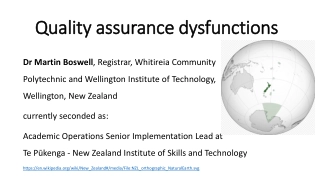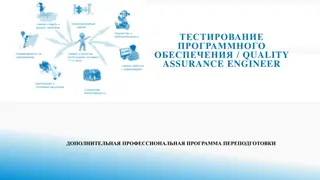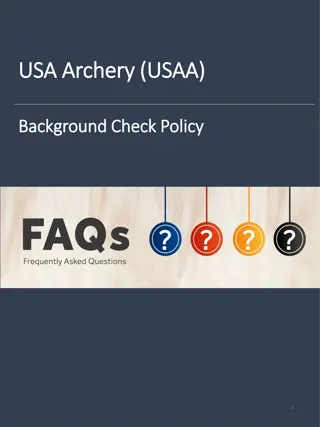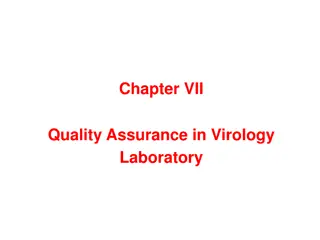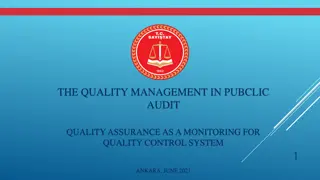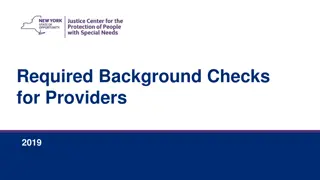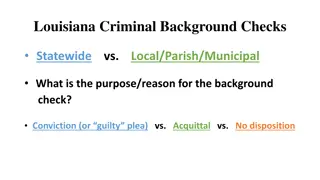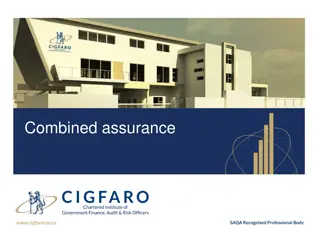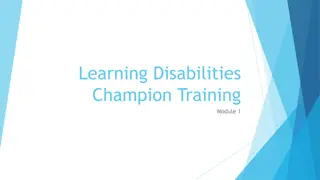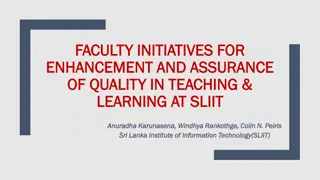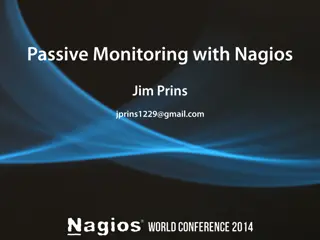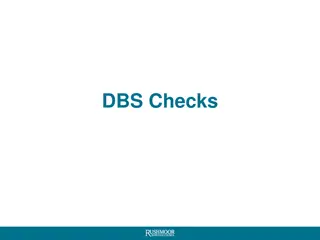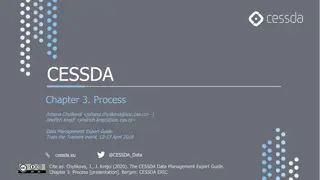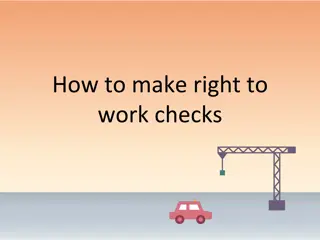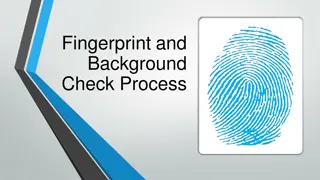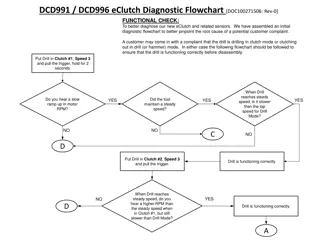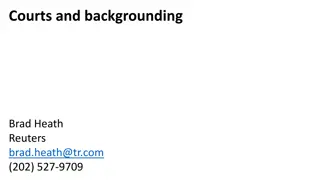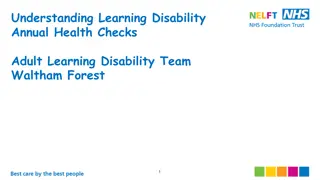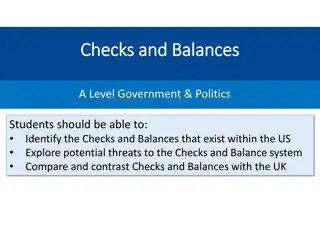Children First Compliance Assurance Checks
Significant levels of compliance were found in most hospitals participating in the pilot program for Children First Compliance Assurance Checks. However, two areas showed notably low levels of compliance involving Child Safeguarding Statements and Child Protection and Welfare Records management. The findings include reasons for partial or no evidence of compliance, such as the lack of consideration of child safeguarding risks in hospital departments and deficiencies in developing and displaying Child Safeguarding Statements.
Download Presentation

Please find below an Image/Link to download the presentation.
The content on the website is provided AS IS for your information and personal use only. It may not be sold, licensed, or shared on other websites without obtaining consent from the author. Download presentation by click this link. If you encounter any issues during the download, it is possible that the publisher has removed the file from their server.
E N D
Presentation Transcript
Children First Compliance Assurance Checks Overview Report Acute Hospitals (Pilot) | Q32023
Hospitals selected for Compliance Check The HSE Children First National Office, in consultation with the Acute Hospital Division Children First Reference Group, undertook seven Children First Compliance Assurance Checks as part of this pilot. The pilot took place between September 2023 and February 2024. One hospital from each of the seven hospital groups was randomly selected by the Children First National Office; five were HSE hospitals and two were HSE Funded. Of the seven hospitals selected; two were Model 3 hospitals, three were Model 2 hospitals and the remaining two were specialist hospitals (one Maternity and the other a Children's hospital). Hospital Managers were invited to attend an Information Session and all were provided with a copy of the HSE Children First Compliance Assurance Framework from the outset. Each hospital received an individual service report following the Check and an overarching Pilot Report was prepared and circulated.
Overview of Findings Areas of Compliance CSS in accordance with legislative requirements Funded services- Self-audit checklist completed Sufficient Risk Assessment undertaken CSS in accordance with Tusla guidelines Funded services - CPW Policy Consistent CSS CSS CPW Policy read by all staff CPW Record Management Procedure CPW Reporting Procedures CSS reviewed within 24mths eLearning Completed Displayed appropriately furnished to all staff 3 3 2 6 7 6 5 1 4 1 5 2 4 4 5 1 0 0 1 0 3 5 2 0 0 0 0 0 0 1 1 1 0 1 0 0 43% 43% 29% 86% 100% 86% 71% *50% 57% 14% 71% *100% Evidence full compliance Evidence full compliance Evidence full compliance Evidence full compliance Evidence full compliance Evidence full compliance Evidence full compliance Evidence full compliance Evidence full compliance Evidence full compliance Evidence full compliance Evidence full compliance *Five HSE hospitals and two HSE funded hospitals participated in this Pilot. Evidence of compliance Evidence of partial compliance No evidence of compliance
Summary Findings (continued) Significant levels of compliance were noted in most hospitals with the majority of requirements reported on. Notably low levels of compliance were identified in two areas: (i) the development of Child Safeguarding Statements in line with guidance issued by Tusla [legislative requirement] (ii) management of Child Protection and Welfare Records [HSE Policy requirement]. Reasons for findings of 'no' or 'partial' evidence of compliance: 1. 2. Child Safeguarding risks were not considered by all hospital departments Hospitals could not evidence in their risk assessments that they had considered: Risk of harm through access to ICT (e.g. social media or web access, electronic contact, etc.) Risk of harm to a child from the use/misuse of digital images. Risk of harm to a child by another child. 3. Child Safeguarding Statements were not (i) developed in line with legislative requirements (ii) developed in line with Tusla guidance (iii) displayed and reviewed in line with legislative requirements. 4. Procedures were not in place to ensure that Child Protection and Welfare records are stored appropriately and securely; measures were not always in place to ensure that staff were aware of CP&W records and could access them on a need to know basis.
Learning ANY potential for harm to a child while availing of the service must be considered in a Child Safeguarding Risk Assessment; it is important to consider who the service user is; the vulnerability of children attending the service, and all activities provided as part of the service: e.g. lone working; home visits; intimate care; taking photographs; outings; prescribing of medication; access to ICT; services provided online or by phone including services provided to adults who may be parents/guardians or have access to children. Child Safeguarding Statements must be developed in line with any guidance issued by Tusla. In addition to following HSE Guidance on Developing Child Safeguarding Statements it is also advisable to refer to the Outcome Review Form used by the Tusla Child Safeguarding Statement Compliance Unit. The form can be found on the Tusla website www.tusla.ie. The most up to date version of the HSE Child Safeguarding Statement template should always be used; available for download at www.hse.ie/childrenfirst. Please note that it should always be printed in A3.
Learning (continued) Child Safeguarding Statements must be reviewed at intervals of not more than 24 months, or, sooner following a material change in any matter to which the statement refers. Services must have appropriate procedures in place for the management and storage of child protection & welfare records. CP&W records must be stored securely in a manner that upholds the confidential nature of the information. See Section 6 of HSE Child Protection & Welfare Policy for guidance. Please note: Copies of all reports sent to Tusla must be retained Child protection and welfare records must be held in perpetuity Access to CP&W records must be on a need to know basis If a separate CP&W record exists this must be noted on the main chart
Risk Assessment | Assessment of any potential for harm to a child Overall Findings Children First Act 2015 3 Compliant Requirement 4 Partial Compliance An assessment of any potential for harm to a child must be undertaken (risk assessment). 0 No Evidence of Compliance Key Findings: 43% Compliance Rate Gaps based on the nature of the services provided were identified in Child Safeguarding Risk Assessments. Child Safeguarding Risk Assessments were incomplete i.e. not all services/departments had contributed to or undertaken a risk assessment. Procedures were listed or identified as being in place in relation to some, but not all, of the risks identified. Some of the procedures listed as controls to manage identified risks were not considered to be realistic, sufficient or relevant.
Child Safeguarding Statement | Legislative Requirements Children First Act 2015 Overall Findings 3 Compliant Requirement 4 Partial Compliance A Child Safeguarding Statement (CSS) must be prepared in accordance with legislative requirements*. 0 No Evidence of Compliance Key Findings: 43% Compliance Rate Child Safeguarding Statements did not specify clear principles and evidence of a commitment to safeguarding children from harm [some hospitals were using outdated HSE CSS templates]. Some of the prescribed procedures listed in Section 11(3) of the Children First Act 2015 were not specified in the CSS. *(i) The CSS must describe the service being provided and the principles to be observed to safeguard children while availing of the service (ii) A Relevant Person must be appointed for the purpose of the CSS (iii) The CSS must include a written assessment of any potential for harm to a child while availing of the service (iv) The CSS must specify the procedures that are in place to manage any risk identified and the prescribed procedures required to be in place, as listed in Section 11(3) of the Children First Act 2015.
Child Safeguarding Statement | Guidance issued by Tusla Children First Act 2015 Overall Findings 2 Compliant Requirement 5 Partial Compliance A Child Safeguarding Statement must be developed with due regard to, and in accordance with, any guidelines issued by Tusla Child and Family Agency*. 0 No Evidence of Compliance Key Findings: 29% Compliance Rate There was no evidence to suggest that the following risks had been considered: Risk of harm through access to ICT (e.g. social media or web access, electronic contact, etc.) Risk of harm to a child from the use/misuse of digital images. Risk of harm to a child by another child. Name of Service Manager and contact details for Relevant Person were omitted from CSSs. No reference to secondary risk assessments on CSSs when one had been completed and was made available [an outdated HSE CSS template was used in this instance]. *Guidelines referenced in this section of report are taken from Tusla's Checklist Review Outcome Form Ref: RF/CSSCU/005
Child Safeguarding Statement | Display Children First Act 2015 Overall Findings 6 Compliant Requirement 1 Partial Compliance A Child Safeguarding Statement must be displayed in a prominent place where the relevant service concerned relates or is provided or both, as may be appropriate. 0 No Evidence of Compliance 86% Compliance Rate Key Findings: Child Safeguarding Statements were not displayed prominently as per the legislative requirement in one hospital, also, three different versions of the Child Safeguarding Statement were on display.
Child Safeguarding Statement | Furnished and made available Children First Act 2015 Overall Findings 7 Compliant Requirement 0 Partial Compliance A provider of a relevant service shall furnish a copy of the Child Safeguarding Statement to members of staff and, on request, to parents, guardians, members of the public and Tusla Child and Family Agency. 0 No Evidence of Compliance 100% Compliance Rate Key Findings: All staff were furnished with a copy of the service's Child Safeguarding Statement and copies were made available to parents, guardians, members of the public and Tusla on request.
Child Safeguarding Statement | Review Children First Act 2015 Overall Findings 6 Compliant Requirement 0 Partial Compliance A provider of a relevant service shall review a Child Safeguarding Statement at intervals of not more than 24 months or as soon as practicable after there has been a material change in any matter to which the statement refers. 1 No Evidence of Compliance 86% Compliance Rate Key Findings: The Child Safeguarding Statements on display were out of date.
Child Protection & Welfare Policy | Appendix 3 or equivalent Children First Act 2015 Overall Findings 5 Compliant Requirement 1 Partial Compliance All staff must ensure that they have read and understand their responsibilities as set out in the Service's Child Protection and Welfare Policy. 1 No Evidence of Compliance 71% Compliance Rate Key Findings*: One service did not have a CPW Policy in place. Appendix 3 was being retained by line managers but not all staff had signed it. * Please note that findings for this requirement are based on signed declarations by the Service Managers only.
Child Protection & Welfare Policy | Funded & Contracted* Children First Act 2015 Overall Findings 1 Compliant Requirement 0 Partial Compliance HSE funded and contracted services should have a CPW Policy that is consistent with the core components of the HSE CPW Policy. 1 No Evidence of Compliance 5 N/A Key Findings: 50% Compliance Rate One hospital did not have a CPW Policy in place. The CPW Policy in place in the other hospital was consistent with the core components of the HSE CPW Policy. * Two of the seven hospitals selected were HSE Funded Services.
Mandatory Training | 'An Introduction to Children First' - 3 yearly Children First Act 2015 Overall Findings 4 Compliant Requirement 3 Partial Compliance All HSE staff, volunteers, students, contracted staff and staff of HSE funded organisations are required to complete the mandatory HSE eLearning module An Introduction to Children First , as required (currently every 3 years). 0 No Evidence of Compliance 57% Compliance Rate Key Findings*: Measures were not in place to evidence that all staff had completed the mandatory Children First training programme 'An Introduction to Children First' in some hospitals. One service provided inconsistent information and there was no procedure in place to ensure that refresher training was completed. * Please note that findings for this requirement are based on signed declarations by the Service Managers only.
Child Protection & Welfare Records | Record Management Children First Act 2015 Overall Findings 1 Compliant Requirement 5 Partial Compliance Child protection and welfare records must be appropriately filed and securely stored in a manner which upholds the confidential nature of the information. 1 No Evidence of Compliance Key Findings: 14% Compliance Rate Procedures were not in place to ensure that CPW records are stored appropriately and securely. Practices differed across hospital departments. In some instances CPW reports submitted to Tusla were not retained at all. Access to records was also identified as an issue e.g. records stored in confidential Social Work notes are not accessible to staff out of hours. Measures were not in place to ensure that staff (on a 'need to know' basis) were made aware of previously reported CPW concerns in some hospitals.
CP&W Concerns | Reporting Procedure Children First Act 2015 Overall Findings 5 Compliant Requirement 2 Partial Compliance All organisations should have procedures in place for reporting child protection and welfare concerns. Procedures should be made available and followed by all staff members, students and volunteers. 0 No Evidence of Compliance 71% Compliance Rate Key Findings: CPW Reporting Procedures were in place but there was evidence to suggest that they were not fully implemented and being adhered to e.g. a part of the HSE CPW Reporting Procedure is to retain records of concerns which includes any reports sent to Tusla.
Service Arrangements| Funded & Contracted* Children First Act 2015 Overall Findings 2 Compliant Requirement 0 Partial Compliance The Implementation and Compliance Self-Audit Checklist for HSE and HSE Funded and Contracted Services must be completed annually by Funded Service providers and made available to the HSE on request. 0 No Evidence of Compliance 5 N/A Key Findings: 100% Compliance Rate Self-assessment Checklists were completed as required and could be produced on request. * Two of the seven hospitals selected were HSE Funded Services.
Please direct queries to: HSE Children First National Office childrenfirst@hse.ie www.hse.ie/childrenfirst
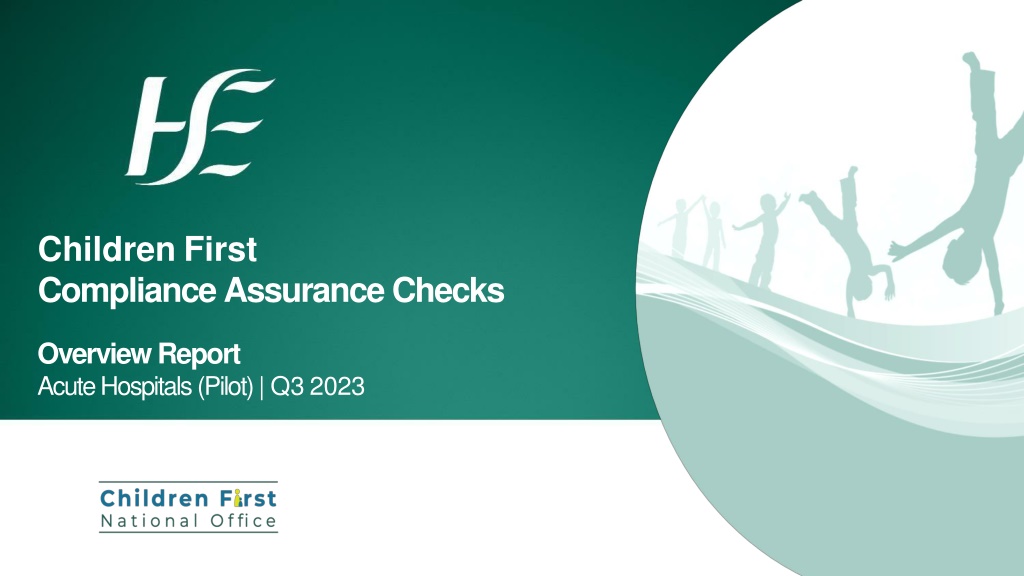
 undefined
undefined








